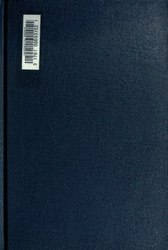File:The Sacred Books and Early Literature of the East, Volume 03.djvu
Link to the index page

Size of this JPG preview of this DJVU file: 402 × 599 pixels. Other resolutions: 161 × 240 pixels | 322 × 480 pixels | 515 × 768 pixels | 687 × 1,024 pixels | 1,374 × 2,048 pixels | 2,878 × 4,290 pixels.
Original file (2,878 × 4,290 pixels, file size: 12 MB, MIME type: image/vnd.djvu, 432 pages)
File history
Click on a date/time to view the file as it appeared at that time.
| Date/Time | Thumbnail | Dimensions | User | Comment | |
|---|---|---|---|---|---|
| current | 14:01, 1 August 2019 |  | 2,878 × 4,290, 432 pages (12 MB) | Beleg Tâl | Importation from Internet Archive via IA-upload |
File usage
The following 34 pages use this file:
- Page:The Sacred Books and Early Literature of the East, Volume 03.djvu/1
- Page:The Sacred Books and Early Literature of the East, Volume 03.djvu/10
- Page:The Sacred Books and Early Literature of the East, Volume 03.djvu/102
- Page:The Sacred Books and Early Literature of the East, Volume 03.djvu/138
- Page:The Sacred Books and Early Literature of the East, Volume 03.djvu/14
- Page:The Sacred Books and Early Literature of the East, Volume 03.djvu/146
- Page:The Sacred Books and Early Literature of the East, Volume 03.djvu/148
- Page:The Sacred Books and Early Literature of the East, Volume 03.djvu/16
- Page:The Sacred Books and Early Literature of the East, Volume 03.djvu/198
- Page:The Sacred Books and Early Literature of the East, Volume 03.djvu/2
- Page:The Sacred Books and Early Literature of the East, Volume 03.djvu/200
- Page:The Sacred Books and Early Literature of the East, Volume 03.djvu/24
- Page:The Sacred Books and Early Literature of the East, Volume 03.djvu/246
- Page:The Sacred Books and Early Literature of the East, Volume 03.djvu/248
- Page:The Sacred Books and Early Literature of the East, Volume 03.djvu/3
- Page:The Sacred Books and Early Literature of the East, Volume 03.djvu/330
- Page:The Sacred Books and Early Literature of the East, Volume 03.djvu/332
- Page:The Sacred Books and Early Literature of the East, Volume 03.djvu/368
- Page:The Sacred Books and Early Literature of the East, Volume 03.djvu/38
- Page:The Sacred Books and Early Literature of the East, Volume 03.djvu/396
- Page:The Sacred Books and Early Literature of the East, Volume 03.djvu/398
- Page:The Sacred Books and Early Literature of the East, Volume 03.djvu/4
- Page:The Sacred Books and Early Literature of the East, Volume 03.djvu/40
- Page:The Sacred Books and Early Literature of the East, Volume 03.djvu/426
- Page:The Sacred Books and Early Literature of the East, Volume 03.djvu/427
- Page:The Sacred Books and Early Literature of the East, Volume 03.djvu/428
- Page:The Sacred Books and Early Literature of the East, Volume 03.djvu/429
- Page:The Sacred Books and Early Literature of the East, Volume 03.djvu/430
- Page:The Sacred Books and Early Literature of the East, Volume 03.djvu/431
- Page:The Sacred Books and Early Literature of the East, Volume 03.djvu/432
- Page:The Sacred Books and Early Literature of the East, Volume 03.djvu/5
- Page:The Sacred Books and Early Literature of the East, Volume 03.djvu/6
- Page:The Sacred Books and Early Literature of the East, Volume 03.djvu/7
- Index:The Sacred Books and Early Literature of the East, Volume 03.djvu



